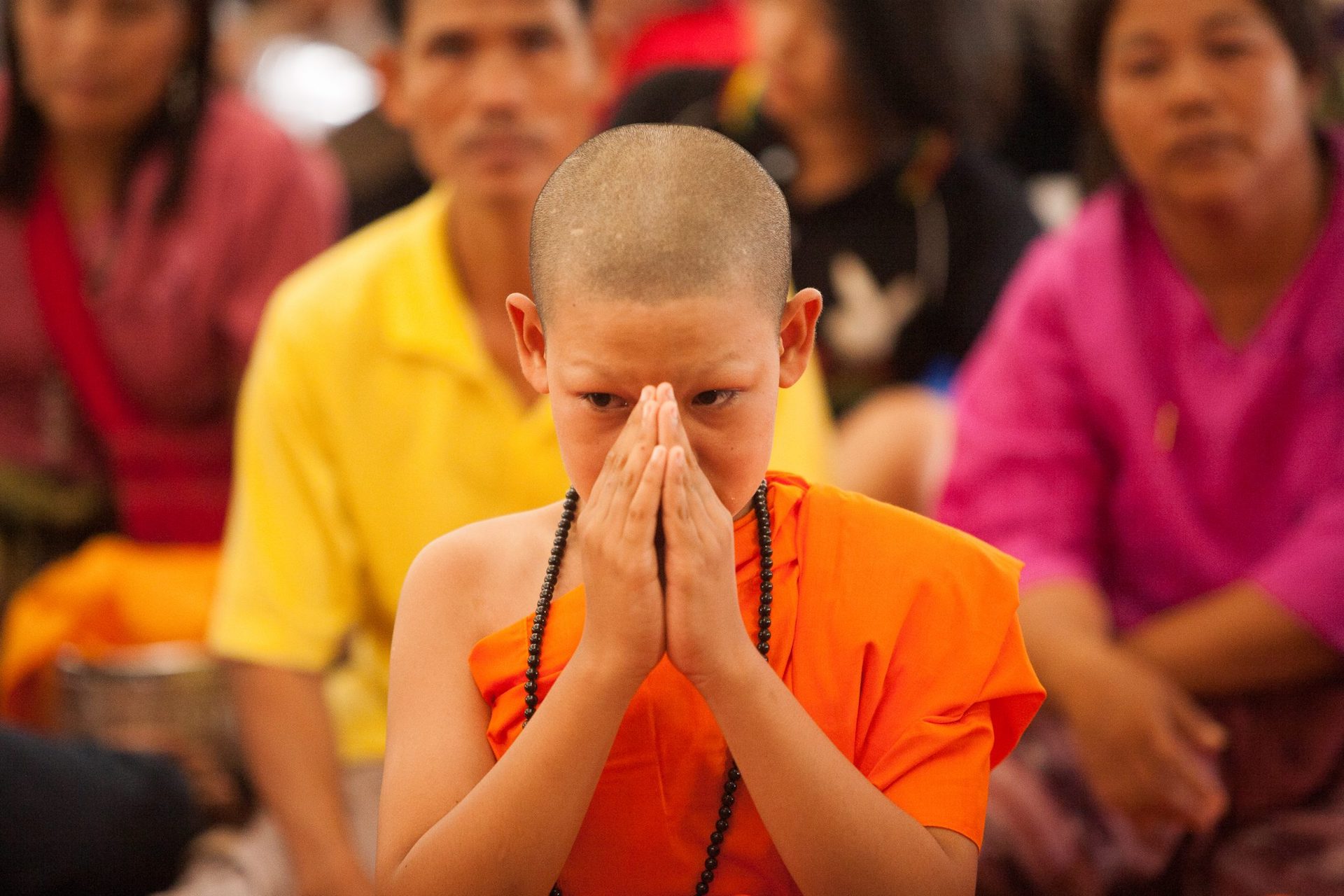
My family moved to Thailand when I was ten. The country is primarily Buddhist, so the respected religious figures in the region were not pastors in suits, but monks in orange or maroon robes. There is at least one temple in every neighborhood in Thailand, so I became used to seeing Theravada Buddhist monks going about their day and duty. I was quick to give them a wide berth to make sure I couldn’t come into physical contact with them, as doing so would mean they’d have to perform rituals to cleanse them of a woman’s touch.
I once visited the Shan people of northern Thailand to learn about their famous Poy Sang Long festival. The purpose of the festival is to ordain young boys as monks. The ordination process varies depending on the type of Buddhism and the region where it is enacted. Some practices are universal, such as shaving heads and donning robes, but others are not. The Shan people practice Theravada Buddhism, and this is how they make their monks.
What is a Buddhist Monk?
Monks follow the legacy of Gautama Buddha by seeking enlightenment through minimalist living and self-denial. In Theravada Buddhism, becoming a monk gains a significant amount of merit for the person and his family. Buddhists believe making merit atones for sins, ensures a better reincarnation, and moves them toward enlightenment.
In fact, many men in Thailand will spend some time—a few days, a few months, or a few years—as a monk. It’s a duty, something akin to military service in Scandinavian countries or South Korea.
During the three-day Poy Sang Long festival, which means “ordaining of the beloved sons,” Shan boys briefly become novice monks to earn merit for their families. The boys are usually between seven and fourteen years old. Those participating in Poy Sang Long typically spend anywhere from two weeks to two months living in a monastery. It’s a rite of passage that most all boys undergo.
Step One: The Shave
On the first day of the festival, the boys’ heads are shaved.
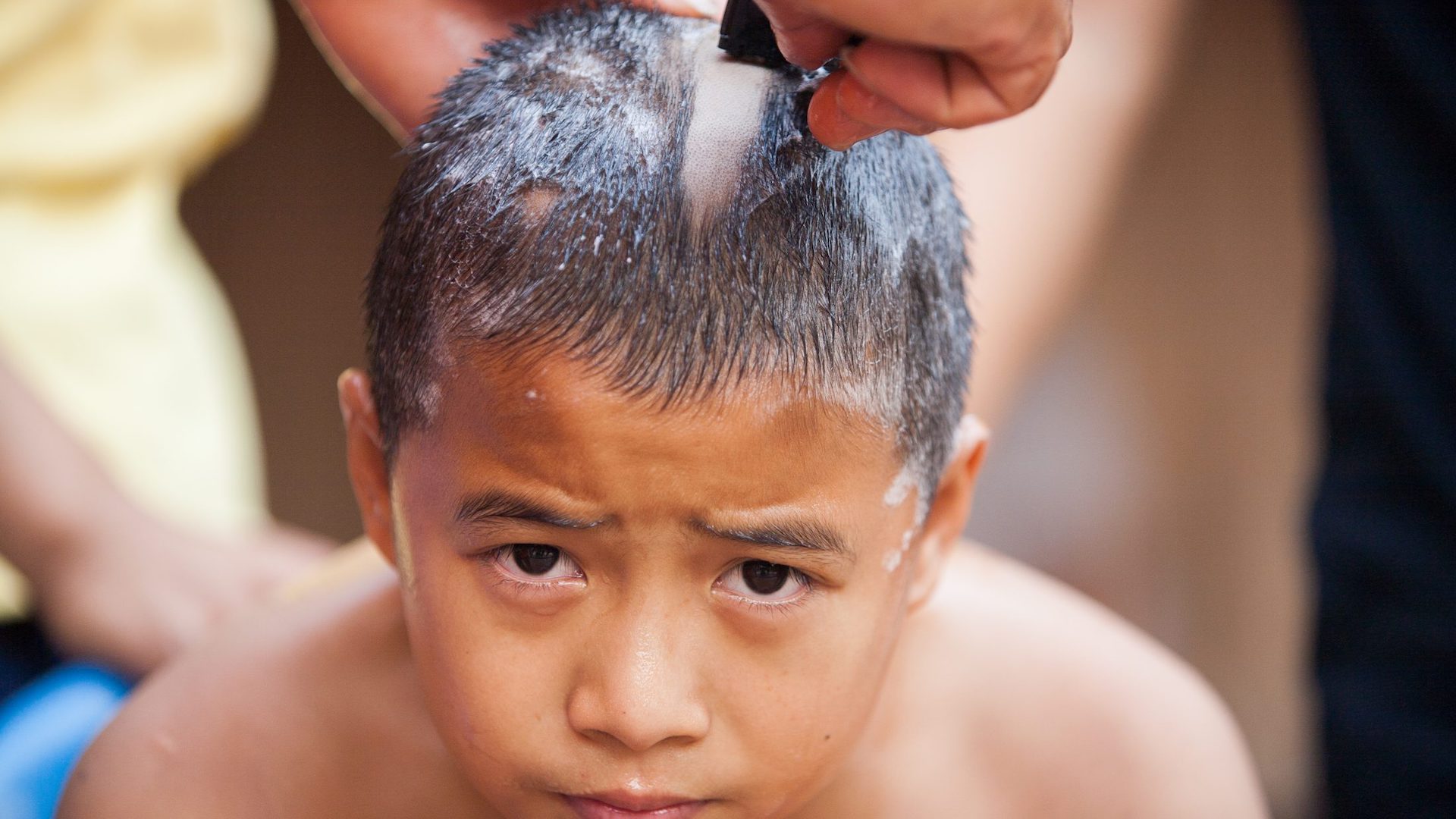 Shaving the head is a nearly universal step to becoming a monk. It symbolizes the renunciation of vanity, a primary tenet of Buddhism. For the novice monks-to-be, senior monks will often begin the shaving process, and the boys’ parents will finish the job of shaving their heads in preparation for the monastery.
Shaving the head is a nearly universal step to becoming a monk. It symbolizes the renunciation of vanity, a primary tenet of Buddhism. For the novice monks-to-be, senior monks will often begin the shaving process, and the boys’ parents will finish the job of shaving their heads in preparation for the monastery.
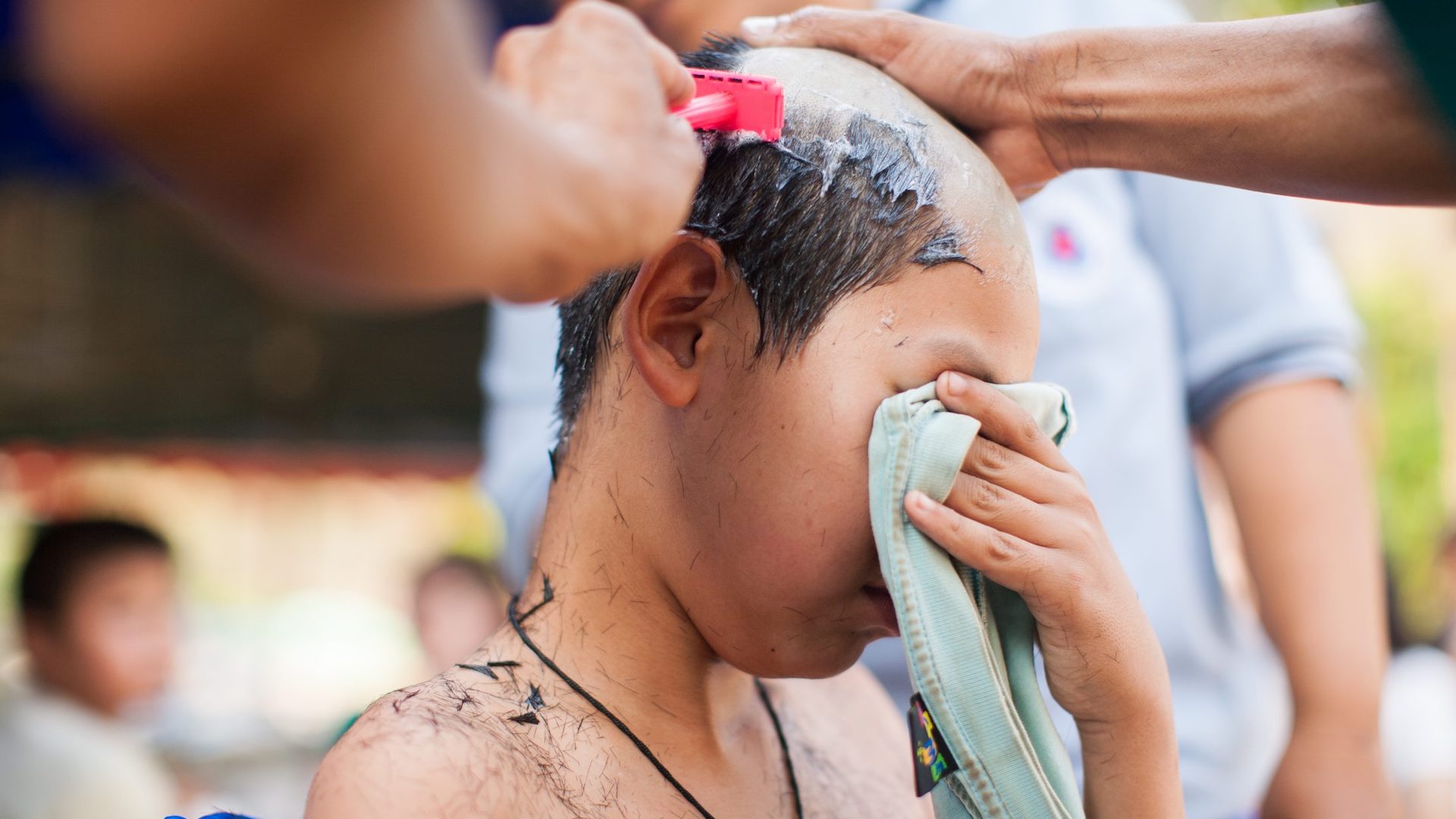 After the shave, the boys bathe in what is considered holy water, and they participate in evening mantras for protection from the spirits.
After the shave, the boys bathe in what is considered holy water, and they participate in evening mantras for protection from the spirits.
Step Two: The Costumes
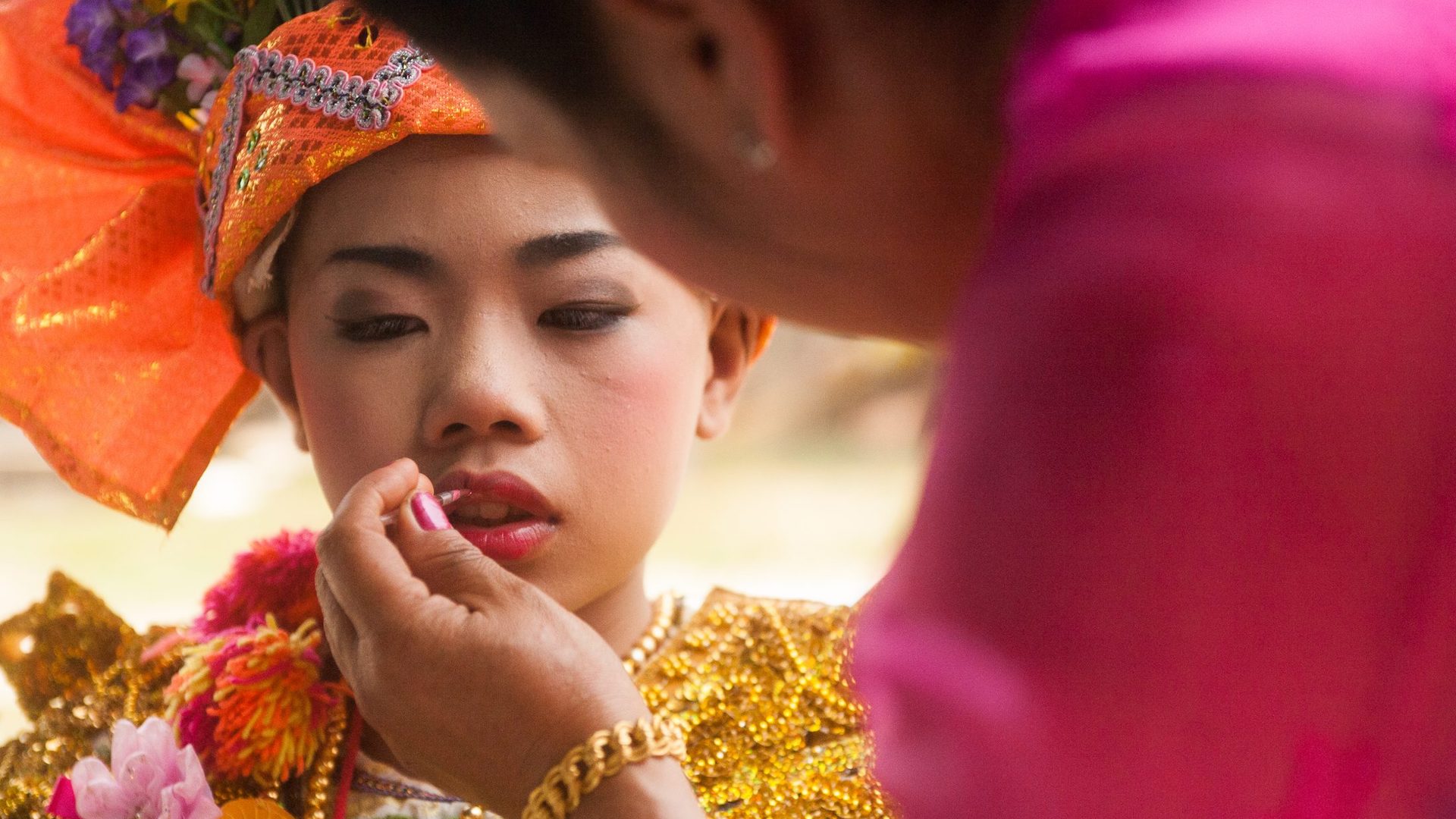 After having their heads shaved, the boys are dressed and treated as princes. The ordination process from here on mirrors Gautama Buddha’s path from princedom to asceticism. Buddha is thought to have been a prince before he cast aside claims to wealth, comfort, and prosperity. These Shan boys become temporary princes of their community before they too lay aside, albeit briefly, the comforts of this world.
After having their heads shaved, the boys are dressed and treated as princes. The ordination process from here on mirrors Gautama Buddha’s path from princedom to asceticism. Buddha is thought to have been a prince before he cast aside claims to wealth, comfort, and prosperity. These Shan boys become temporary princes of their community before they too lay aside, albeit briefly, the comforts of this world.
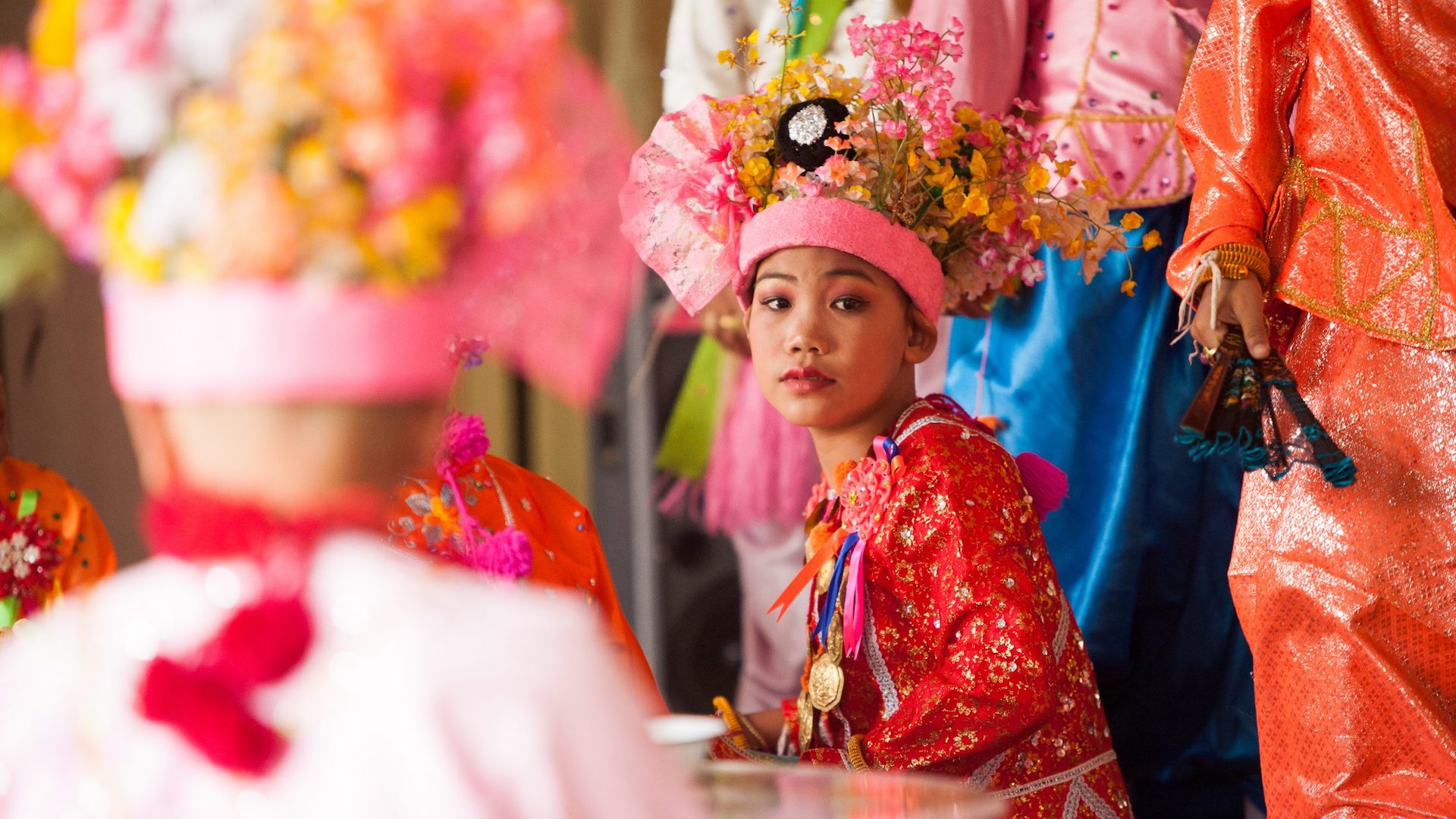 Each boy chooses two relatives to be his “disciples,” whose job it is to attend to the prince, apply makeup, and help him with his outfit.
Each boy chooses two relatives to be his “disciples,” whose job it is to attend to the prince, apply makeup, and help him with his outfit.
During Poy Sang Long, the more makeup, the better. The boys are made up with pink eyeshadow, rosebud red lipstick, and Hello Kitty-pink blush. They also don headdresses of flowers and sport brightly colored costumes. The makeup and headdresses match what Buddha’s attire was thought to look like when he lived some time between the fourth and sixth century BC.
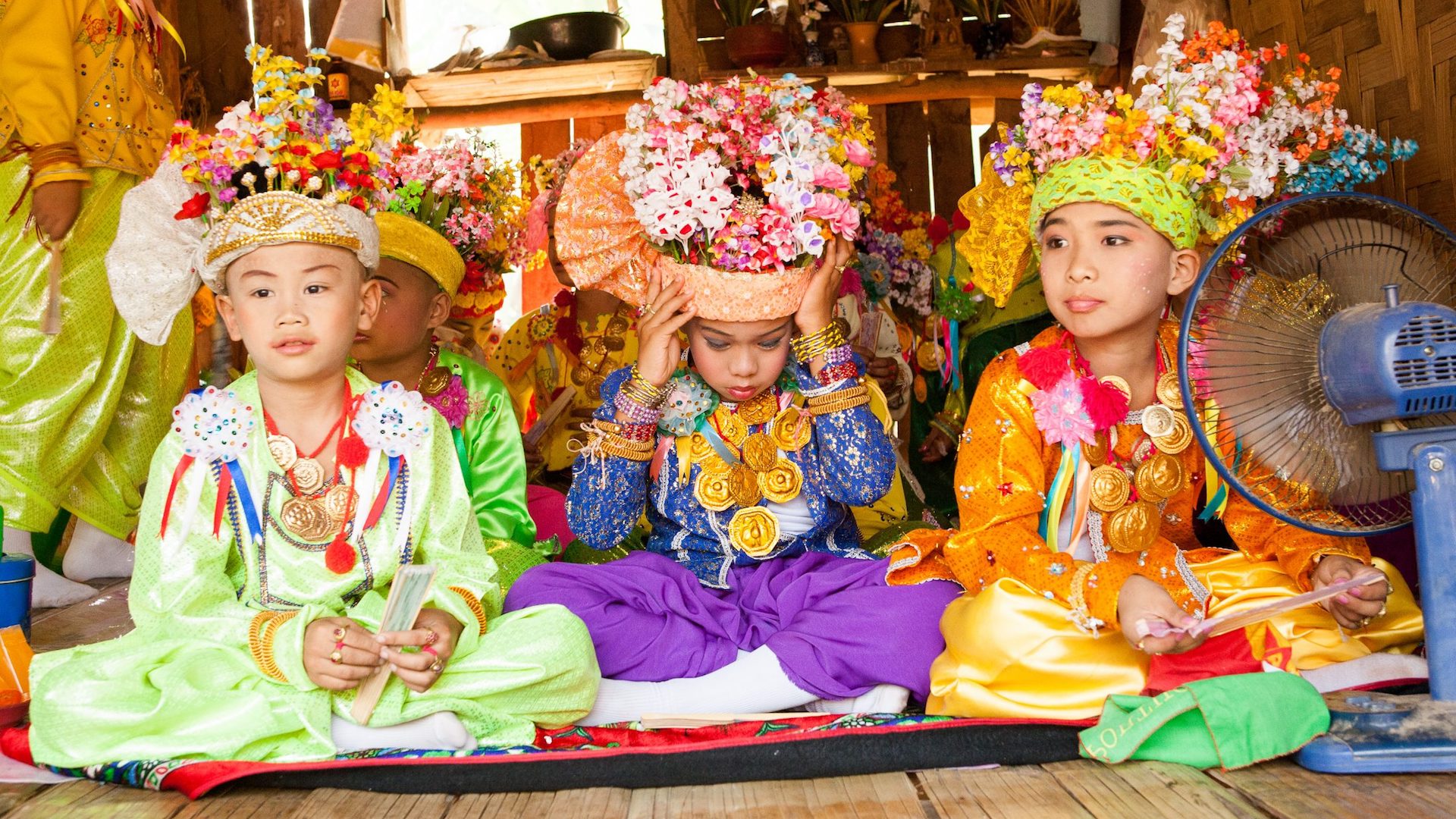 After they are properly adorned, the boys are paraded to the temple to announce their presence to the spirits. Their disciples carry them on their shoulders, as it would not befit royalty for their feet to touch the ground.
After they are properly adorned, the boys are paraded to the temple to announce their presence to the spirits. Their disciples carry them on their shoulders, as it would not befit royalty for their feet to touch the ground.
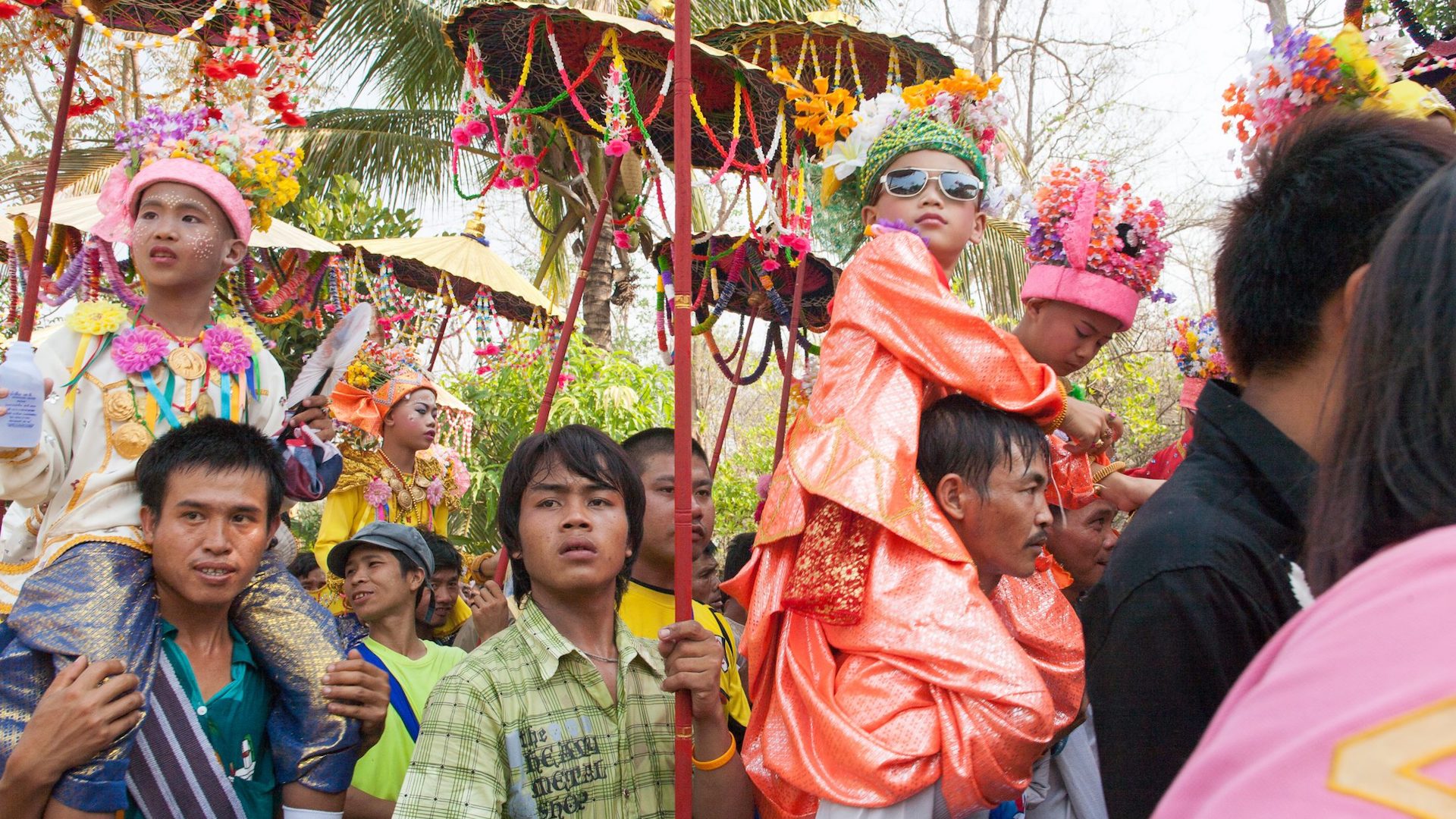 Members of their entourage hold parasols for shade while men of the family, with musical accompaniment, parade the boys through the streets. A processional of family members carrying money attached to plastic trees, bowls made of bronze and silver, and supplies for the boys’ temple stay makes their way to the temple.
Members of their entourage hold parasols for shade while men of the family, with musical accompaniment, parade the boys through the streets. A processional of family members carrying money attached to plastic trees, bowls made of bronze and silver, and supplies for the boys’ temple stay makes their way to the temple.
 After the boys arrive at the temple, they may leave to visit family members or friends. People decorate their porches for the boys to recline and relax on in between festivities. People in the village spend time together, feasting, and socializing. The boys are served and spoiled by their relatives.
After the boys arrive at the temple, they may leave to visit family members or friends. People decorate their porches for the boys to recline and relax on in between festivities. People in the village spend time together, feasting, and socializing. The boys are served and spoiled by their relatives.
 Step Three: The Ordination
Step Three: The Ordination
Ordination occurs on the third day of the festival. The ceremony begins with the boys asking the tenured monks for permission to enter the monastery. When permission is granted, the boys receive their robes and prayer beads.
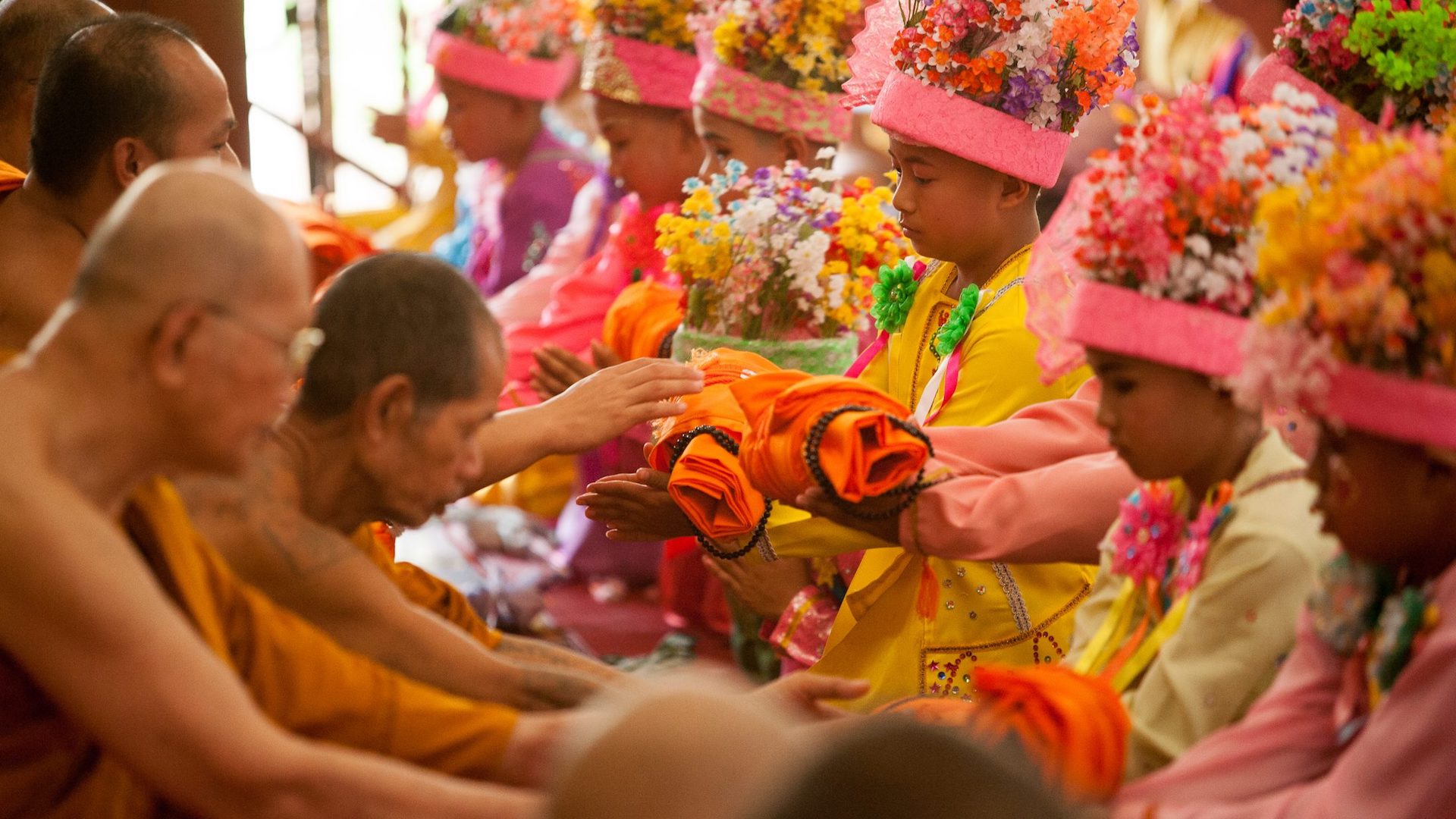 The boys take their vows and put on their orange robes with the help of elder monks and family members. The wearing of robes dates back centuries to the beginnings of Buddhism. Saffron, as the color is officially known, was the color of choice because it was the easiest dye to procure at the time.
The boys take their vows and put on their orange robes with the help of elder monks and family members. The wearing of robes dates back centuries to the beginnings of Buddhism. Saffron, as the color is officially known, was the color of choice because it was the easiest dye to procure at the time.
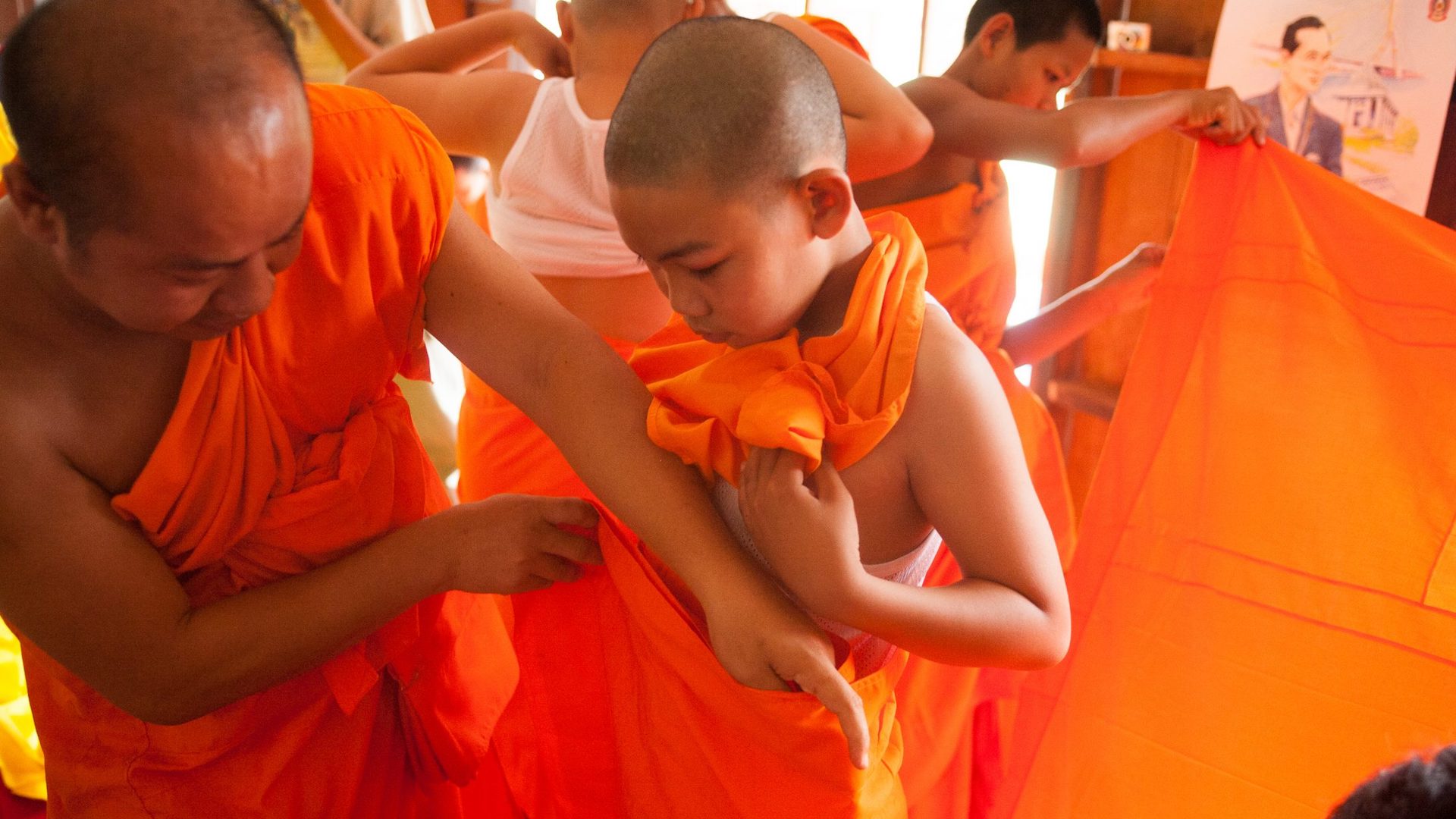 Centuries ago, in an age when clothes were ornate and difficult to make, wearing a simple robe sent the message that a person was forgoing vanity, culture, and customs. Monks wear robes to symbolize their commitment to simplicity and self-denial. Shoes are optional. Some monks will walk barefoot while others may wear simple, plastic flip-flops that were donated to them.
Centuries ago, in an age when clothes were ornate and difficult to make, wearing a simple robe sent the message that a person was forgoing vanity, culture, and customs. Monks wear robes to symbolize their commitment to simplicity and self-denial. Shoes are optional. Some monks will walk barefoot while others may wear simple, plastic flip-flops that were donated to them.
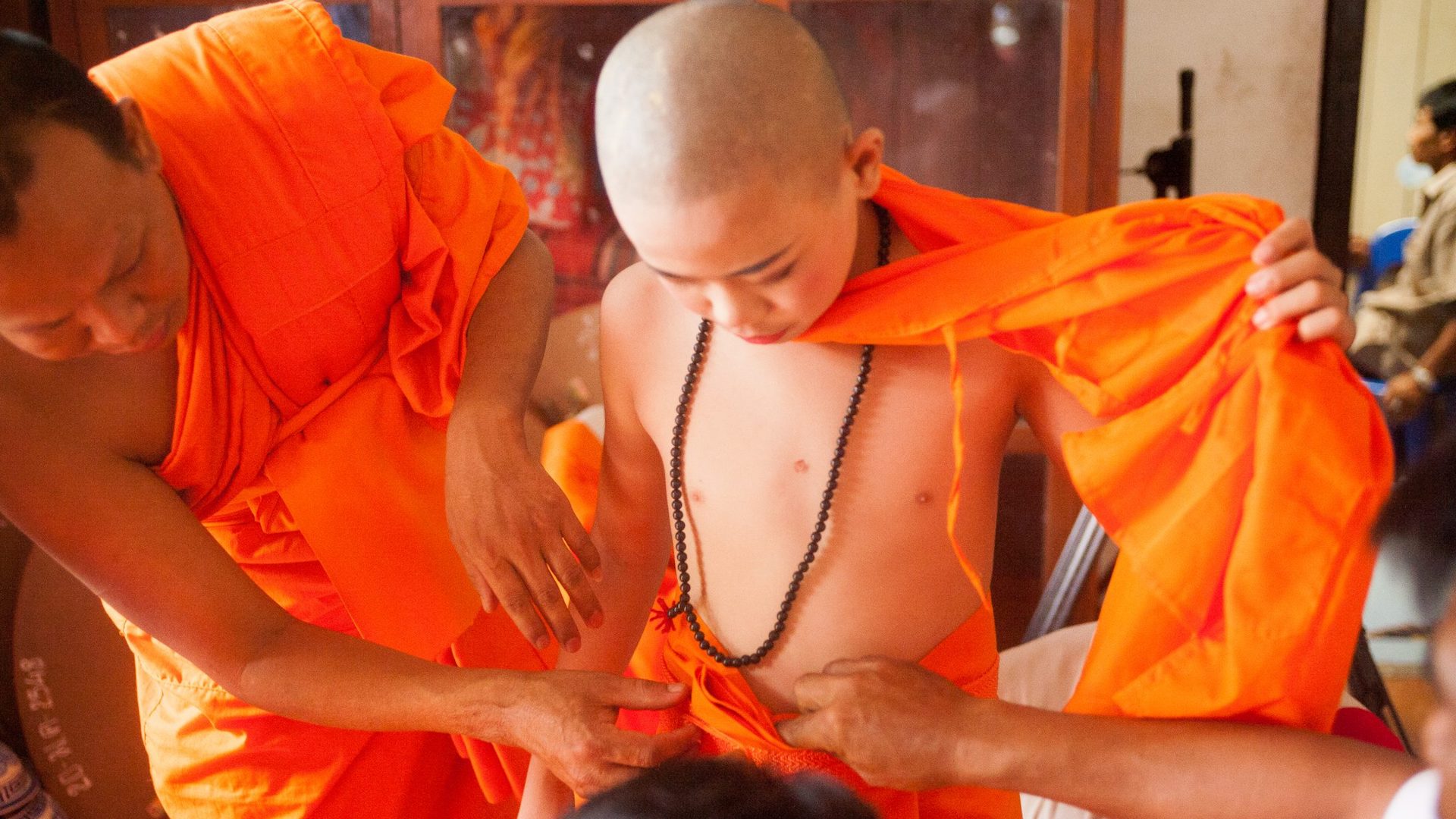 Many Buddhists, not only monks, use prayer beads to help them count the number of times they recite mantras. These incantations help a Buddhist meditate and move them closer to enlightenment. Monks might spend multiple hours a day meditating and chanting mantras, aided by the prayer beads to keep them focused.
Many Buddhists, not only monks, use prayer beads to help them count the number of times they recite mantras. These incantations help a Buddhist meditate and move them closer to enlightenment. Monks might spend multiple hours a day meditating and chanting mantras, aided by the prayer beads to keep them focused.
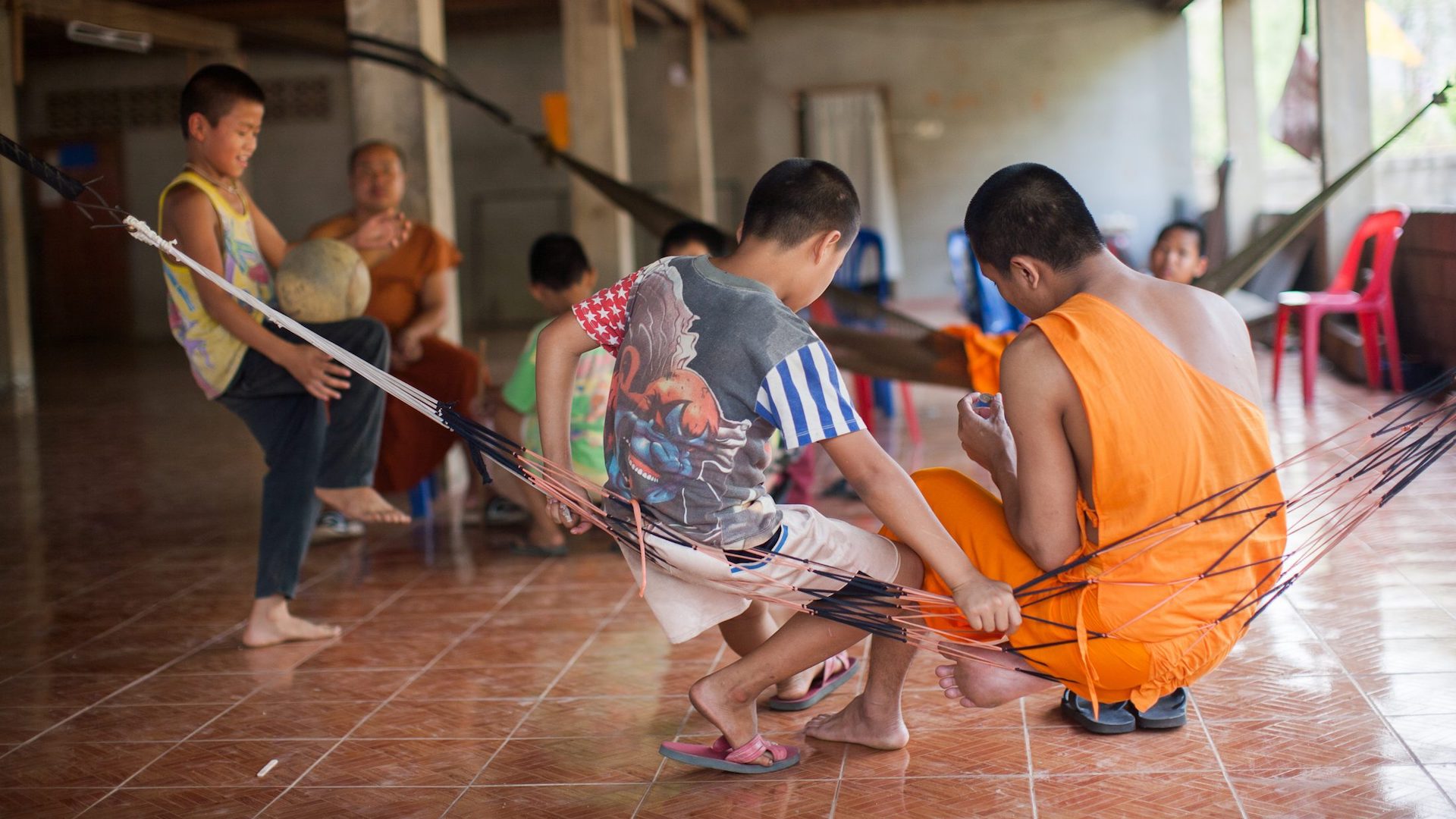 When the Shan boys finish their term of service, many will return to school and complete their studies. Some boys will later return to serve in the temples while others will go on to choose a secular profession. Even if they never again don a saffron robe, throughout their lifetimes they will continue to make merit for themselves and their family. How much merit is enough? That is the question generations of Buddhists have asked and will continue to ask.
When the Shan boys finish their term of service, many will return to school and complete their studies. Some boys will later return to serve in the temples while others will go on to choose a secular profession. Even if they never again don a saffron robe, throughout their lifetimes they will continue to make merit for themselves and their family. How much merit is enough? That is the question generations of Buddhists have asked and will continue to ask.
Caroline Anderson is a writer and photographer with the IMB. She currently lives in Southeast Asia.
C. S. Stanley is a freelance photographer who served for six years with IMB in Asia.